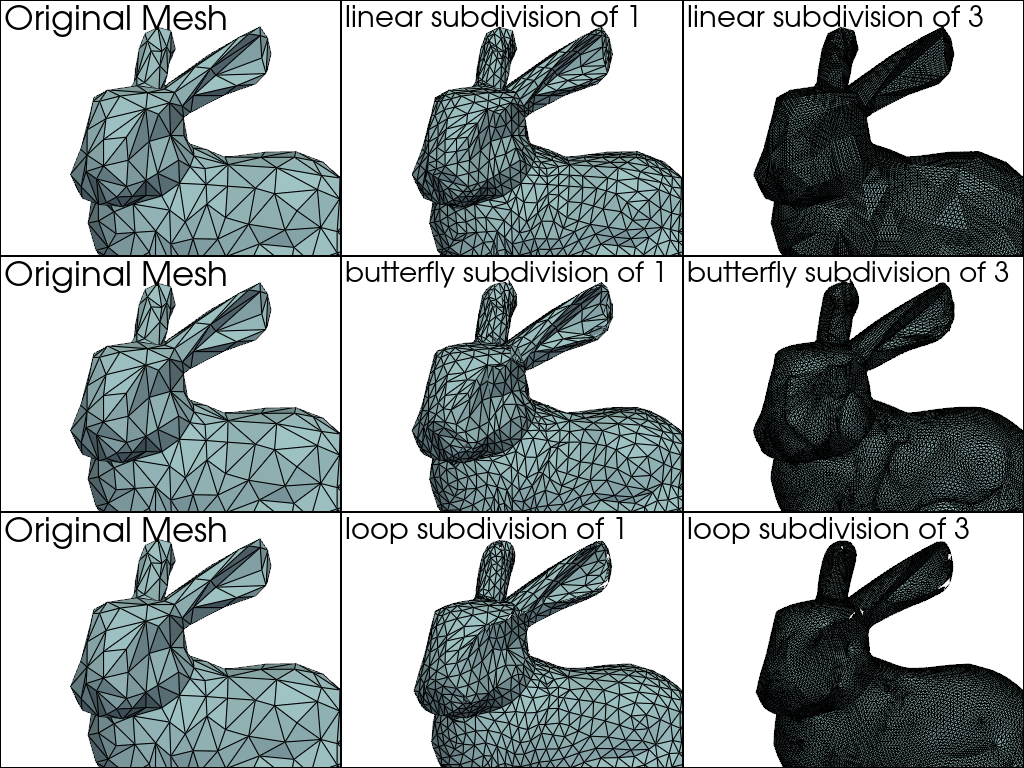Note
Go to the end to download the full example code.
Subdivide Cells#
Increase the number of triangles in a single, connected triangular mesh.
The pyvista.PolyDataFilters.subdivide() filter utilizes three different
subdivision algorithms to subdivide a mesh’s cells: butterfly, loop,
or linear.
from __future__ import annotations
import pyvista as pv
from pyvista import examples
First, let’s load a triangulated mesh to subdivide. We can use the
pyvista.DataObjectFilters.triangulate() filter to ensure the mesh we are
using is purely triangles.
Now, lets do a few subdivisions with the mesh and compare the results. Below is a helper function to make a comparison plot of thee different subdivisions.
def plot_subdivisions(mesh, a, b):
display_args = dict(show_edges=True, color=True)
p = pv.Plotter(shape=(3, 3))
for i in range(3):
p.subplot(i, 0)
p.add_mesh(mesh, **display_args)
p.add_text('Original Mesh')
def row_plot(row, subfilter):
subs = [a, b]
for i in range(2):
p.subplot(row, i + 1)
p.add_mesh(mesh.subdivide(subs[i], subfilter=subfilter), **display_args)
p.add_text(f'{subfilter} subdivision of {subs[i]}')
row_plot(0, 'linear')
row_plot(1, 'butterfly')
row_plot(2, 'loop')
p.link_views()
p.view_isometric()
return p
Run the subdivisions for 1 and 3 levels.
plotter = plot_subdivisions(mesh, 1, 3)
plotter.camera_position = cpos
plotter.show()

Total running time of the script: (0 minutes 1.716 seconds)